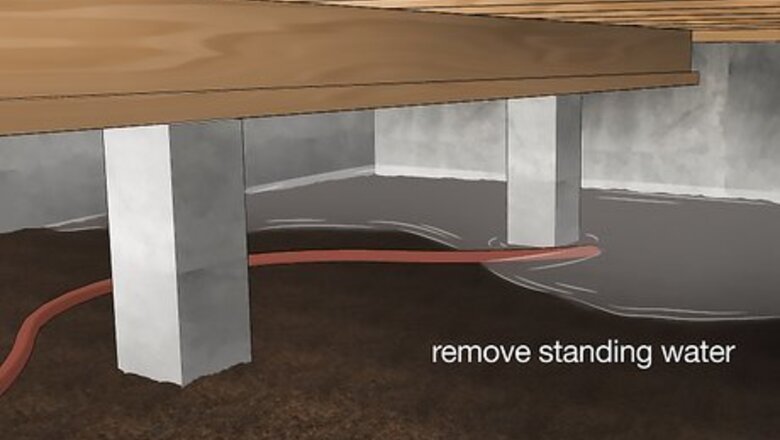
views
Sealing Your Crawl Space
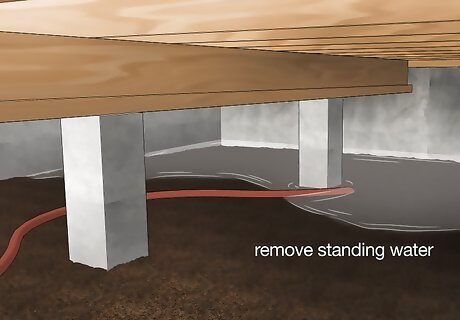
Have your crawl space drained if there’s any standing water. If you try to insulate your crawl space while there’s water on the floor, the moisture won’t be able to escape and could cause wood rot or mold. Contact a professional service to come to your home so they can clean out the crawl space from any moisture that’s trapped inside. The service you hire will either dig a trench or install a drain in the ground so water can easily escape in the future. Draining your crawl space can cost $1,000 USD and up. If your crawl space isn’t properly drained and fixed by professionals, you risk moisture reappearing and reducing the lifespan of your insulation. Don’t install insulation while there’s still moisture in your crawl space since it could easily develop mold.
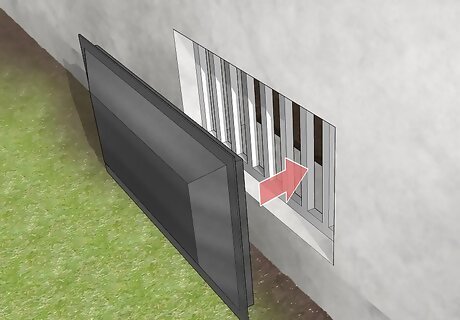
Cover vents leading into your crawl space from the outside with vent covers. Many homes have vents between the crawl space and outside to promote air flow, but they can actually trap moisture inside. Go outside your home and look for any vents or airways that lead directly into the crawl space. Get an airtight vent cover large enough to cover the hole and screw it into place to secure it. You can buy vent covers from your local hardware store or online. Don’t buy vent covers that don’t have a waterproof or airtight seal since they will still occasionally leak.
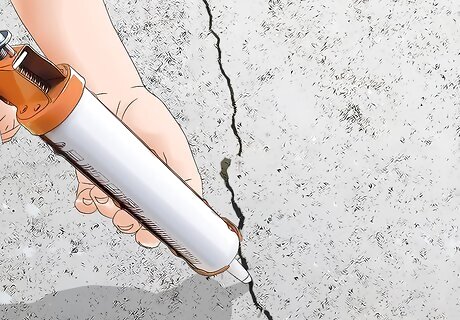
Fill any cracks or gaps with silicone caulk so the crawl space is airtight. Search along the wall and ceiling of your crawl space so you can find any holes or gaps that let air and water inside. Put a tube of caulk into a caulk gun, and pull the trigger to squeeze the caulk into the gaps. Push the caulk into the gap further with a plastic putty knife to make sure it’s completely sealed from the outside. Continue around the crawl space until you’ve covered all of the cracks. This also includes gaps between any joists on the ceiling or the subfloor. You can also apply spray foam insulation to seal the gaps in your crawl space if you want. Hold the can of foam upright and feed the spraying end into the gap. Press down on the button to fill the gap with the insulation.
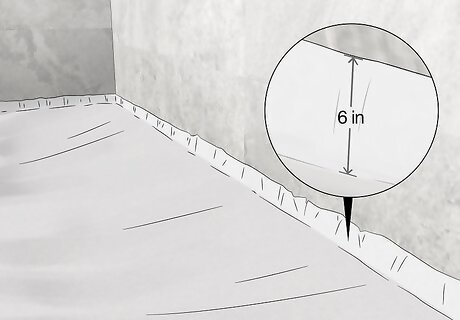
Lay 6-mil polyethylene sheets on the floor to prevent moisture from getting in. Find the length and width of your crawl space with a tape measure, and multiply them together to find the floor area. Spread the polyethylene so it lays flat on the crawl space’s floor. Bend the sheets up so they extend 6 inches (15 cm) up the height of the wall so moisture doesn’t pool on top. When you need to lay another sheet, be sure to overlap the seams by at least 12 inches (30 cm) so water can’t leak through. You can either leave the sheets unsecured or tape them along the seams with waterproof tape. You can get polyethylene sheets from your local home improvement or hardware store.Tip: If you plan on storing items in your crawl space, get 12-mil polyethylene sheets so they don’t rip or tear when you walk on them.
Insulating the Walls
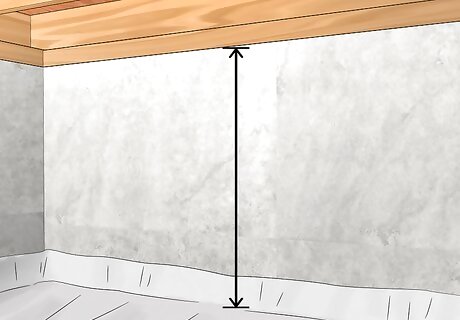
Measure the height and lengths of all your walls. Start in the corner of your crawl space and extend the tape measure from the floor to the top of the ceiling to find the height. Keep the end of your tape measure in the corner and pull it to the corner directly across from it to find the length of the wall. Multiply the height and length to find the surface area of the wall. Repeat the process for any other walls in your crawl space. If the floor for your crawl space is uneven, take the height measurement in multiple spots on the wall and use the tallest height you find.
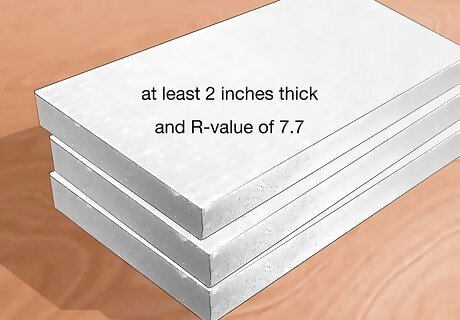
Choose rigid foam board for your walls to prevent any water damage. Rigid foam board has a solid surface, which makes it more waterproof and prevents mold from developing in your crawl space. Look for insulation board that’s at least 2 inches (5.1 cm) thick and has an R-value of 7.7, which refers to how well the insulation works depending on your climate. Make sure you buy enough insulation to cover all of your walls so you don’t leave any areas exposed. You can buy rigid foam board insulation from your local home improvement store. You do not need to buy a separate vapor barrier since it’s already built into the insulation.
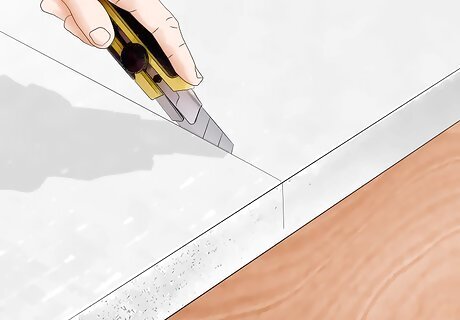
Slice straight through the back of the foam board to cut it to size. Set the foam board on a flat and sturdy work surface so the back side faces up. Extend the blade of a utility knife as far out as it can go and hold it at a 45-degree angle to the insulation. Pull the blade straight through the foam in a single motion. Continue cutting the insulation pieces as you need them so they fit your walls perfectly. Don’t use a sawing motion while you’re cutting the foam board since it will cause pieces to break or leave residue. Use a straightedge as a guide if you want to make your cuts perfectly straight.
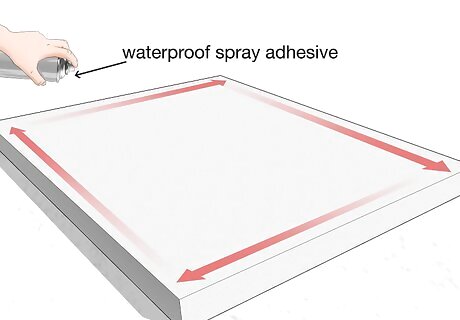
Attach the foam board to the wall with waterproof glue. Keep the foam board so the back side faces up, and shake a can of waterproof spray adhesive. Spray the adhesive around the edges of the foam board so it has even coverage before sticking it onto the wall. Firmly press around the edges so the glue adheres to the wall and makes a firm connection. Continue working around the walls of your crawl space to make sure there aren’t any gaps in the insulation. You can buy waterproof spray glue from a hardware or home improvement store. If the insulation doesn’t stick after you glue the edges, then carefully pull it back off of your wall and apply more glue to the middle of the foam board.Tip: If you have a layer of polyethylene sheets on your floor, cover the portion that extends up your walls by at least 6 inches (15 cm) so it creates a tight seal.
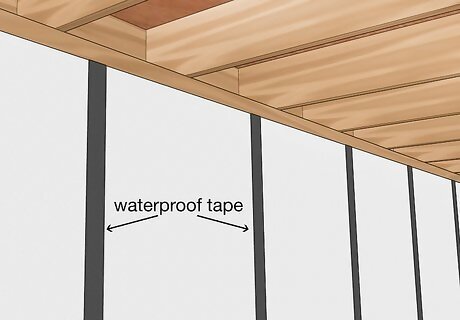
Seal the seams between the insulation boards with waterproof tape. After placing all of the boards around your walls, cut strips of waterproof tape that match the length of the seams between the pieces. Start from the ceiling of your crawl space and work the tape down the length of the seam so it’s easier to apply. Press the tape firmly so it has a firm connection and overlaps each piece by 1–2 inches (2.5–5.1 cm). You can buy waterproof tape from a hardware or home improvement store.
Installing Ceiling Joist Insulation
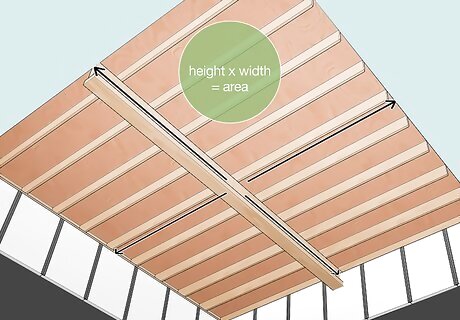
Find the area for the crawl space’s ceiling. Start your tape measure in one of the ceiling corners in your crawl space. Extend the tape measure to the corner directly across from it to find the ceiling length. Keep the end of the tape measure in the same corner and pull it along the other wall to find the width. Multiply the height and width to find the ceiling area so you know how much insulation you need to buy. Measure the width between the ceiling joists as well so you know the width of the insulation you need to buy.
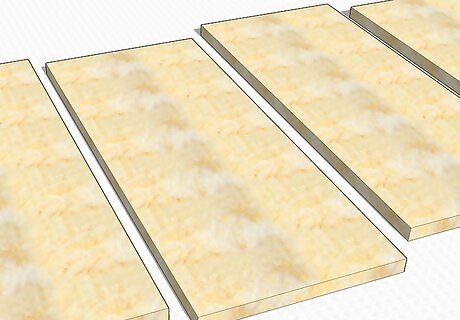
Pick R-11 or R-25 fiberglass insulation batts for the easiest installation. The R-value refers to how effective the insulation is compared to the climate in your area. If you live in a warmer climate with high humidity, opt for insulation batts that have at least an R-11 rating. If you live in a cold climate or an area that has temperatures that drop below freezing, choose R-25 insulation since it’s thicker and will keep your home warmer. Make sure the batts you buy are the same width as the floor joists, or else they won’t fit as well. You can buy insulation batts from your local hardware or home improvement store. If there aren’t batts that perfectly fit between your joists, then opt for a larger size so you can cut it down. Insulation that’s too narrow will allow cold air through and make the insulation less effective.
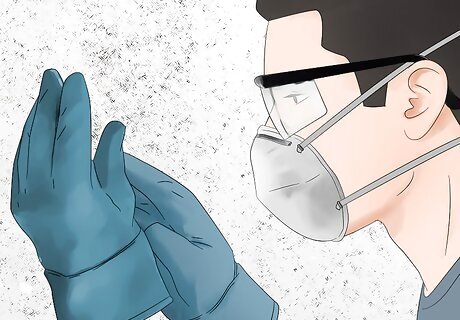
Wear safety glasses, a dust mask, and gloves to prevent irritation. Fiberglass insulation creates small particles that can cause irritation on your skin or in your lungs. Put on safety glasses that cover your eyes as well as a dust mask that covers your mouth and nose. Wear long-sleeved clothing, pants, and gloves to have the least amount of skin exposed.Tip: Apply baby powder to any exposed skin so the insulation particles aren’t able to stick to your skin. That way, you’ll get less irritation while you’re working.
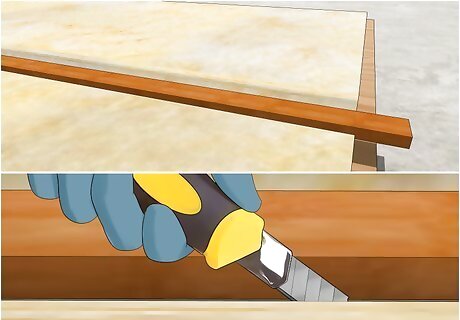
Cut the insulation to size using a utility knife. Lay the insulation down so the vapor barrier on the back faces up. Lay a straightedge across the line you need to cut and press down firmly to compress the foam. Slice through the foam with a utility knife, using the straightedge as a guide for your cut. Continue cutting the insulation until it’s the same length as the spaces between your joists. You may need to trim the width of the insulation if it doesn’t fit perfectly between the joists.
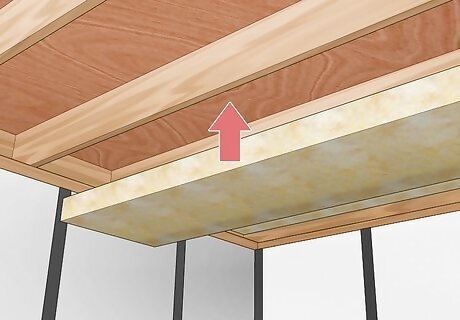
Push the insulation between the ceiling joists so the vapor barrier faces up. Guide the insulation into the spaces between the joists so the vapor barrier touches the floor. Be careful not to compress the insulation, or else it won’t be as effective. Make sure that none of the ceiling is visible or exposed, or else air will still be able to escape and make the main floors in your home colder. Continue pressing the insulation in between each of the joists. Don’t let the insulation bunch up while you’re working with it since it won’t create an effective seal. You may need to cut the insulation so it fits around any pipes or wiring.
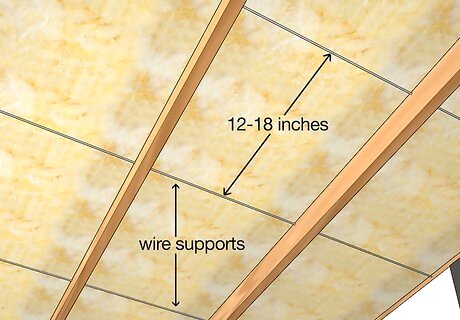
Place wire supports between the joists every 12–18 in (30–46 cm). Wire supports fit between the ceiling joists and prevent the insulation from falling out. Position the support horizontally between the joists and push it up against the insulation so it doesn’t compress any more than 1 inch (2.5 cm). The ends of the support will stick into the wood so you don’t need to secure it. Continue placing the supports along the length of the joists so the insulation doesn’t move. You can also staple landscaping paper between the joists to prevent the insulation from falling, but it may be more difficult to access or replace the batts. You may need to cut the wire supports to size if they are too wide for the joists. Use a pair of wire cutters if needed.

















Comments
0 comment